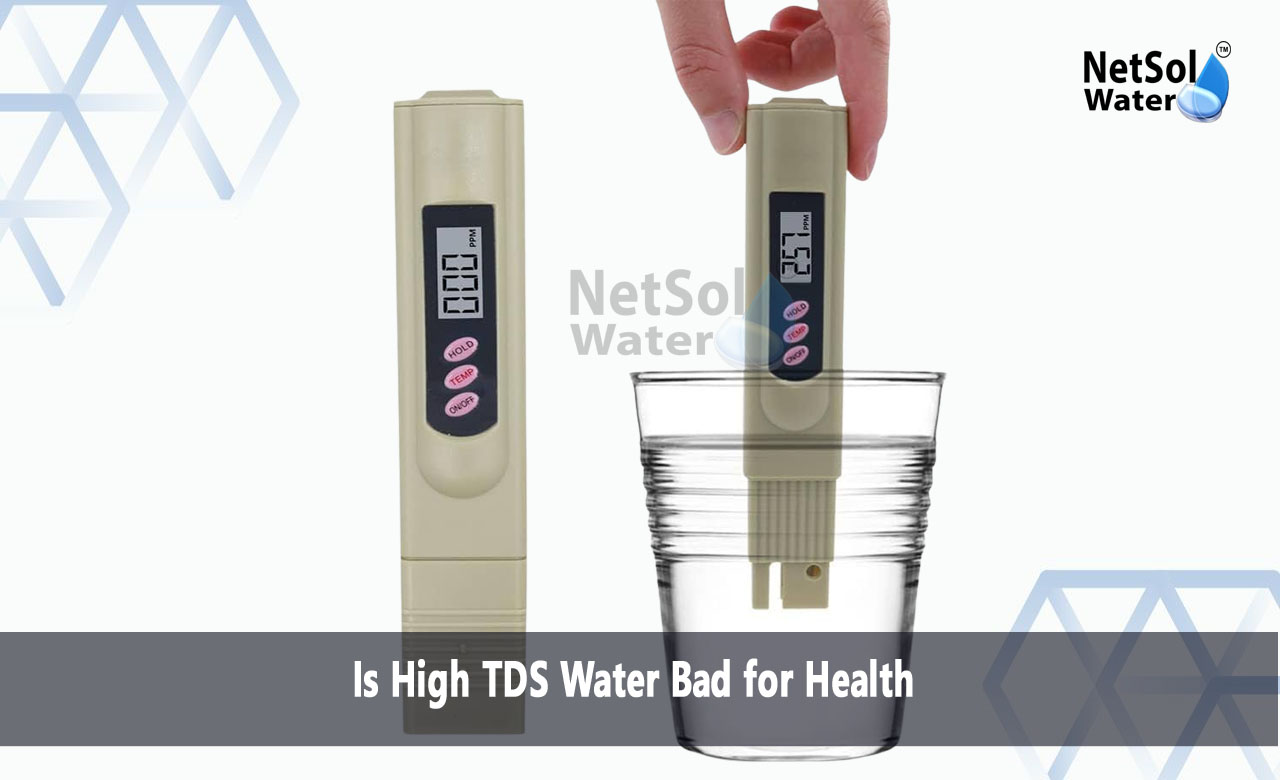Is High TDS Water Bad for Health?
Water that we drink may hold minerals and salts. That sum of minerals and salts is called Total Dissolved Solids or TDS. Many people ask “Is high TDS water bad for health”. That question matters a lot when you choose safe drinking water. TDS level reflects minerals and possible contaminants in water. Very low TDS water may feel flat and lack healthy minerals. Very high TDS water may taste salty or bitter. It may contain harmful elements when the dissolved solids include toxic metals or salts.
TDS and Safe Levels
First, TDS stands for total dissolved solids. Those are minerals, salts, metals and other substances in water. The World Health Organization rates water with TDS below 300?mg per litre as excellent. Water with TDS between 300 and 600?mg per litre is still good. Water above 900?mg per litre is poor or unacceptable. Water with more than 1200?mg per litre is considered unsafe by taste panels. In the United States EPA sets a secondary standard of 500?mg per litre. That is a non enforceable limit based on taste and appearance rather than health. In India BIS accepts up to 500?mg per litre too. WHO suggests maximum 300 to 600 is best. Let us have a look on some headings to break that into detail.
WHO and BIS guidelines
WHO found palatability drops when TDS goes above 600?mg per litre. Water at more than 1000?mg per litre becomes unpleasant and may stain pipes. BIS adopts similar limit near 500?mg per litre as safe for drinking.
EPA secondary standards
EPA treats TDS at 500?mg per litre as a guideline not a law. Their focus lies on taste colour appliance scaling not health risk.
Ideal drinking range
Many sources say 150 to 300?mg per litre gives good taste and healthy minerals. That range feels fresh not flat or salty.
Effects of High TDS on Health
When TDS readings go high that may simply mean there are more minerals in water. Many of those minerals like calcium, magnesium, potassium are beneficial in small amounts. Those minerals support bones, heart and digestion. Hard water may act as a supplement of calcium or magnesium. But if high TDS includes harmful salts or metals then it may pose a health risk. Elevated metals such as lead arsenic nitrates can lie hidden in TDS value. TDS meter does not distinguish good from bad substances. It simply sums all dissolved particles. Let us break into detail.
Gastrointestinal irritation
High TDS water with high sulfate or magnesium levels may cause diarrhoea or upset stomach especially for sensitive people. That effect tends to appear in water with both magnesium and sulfate near 250?mg per litre.
Kidney stones and metabolic risks
Some studies link high mineral load water to kidney stones gall stones or arthritic joints but evidence remains weak and not definitive. Very high hardness may play a part in stone formation over time.
Cardiovascular benefits of minerals
Water rich in magnesium and calcium may offer some protection from heart disease. Some older studies show inverse association between water hardness and cardiovascular mortality in men. That means those minerals may support healthy heart.
High TDS and Taste Comfort
TDS affects taste, odour and clarity of water. Water that tastes salty, metallic or bitter likely has high TDS from salts or heavy metals. That may reduce how much water people drink and lead to low hydration. That in turn impacts energy levels, kidney function and brain performance. Let us have a look on some headings.
Taste and odour effects
Panels find water below 300?mg per litre tastes fresh. Water above 600?mg per litre may taste poor. Very high level can smell odd or appear coloured.
Hydration impact
If water tastes bad people avoid drinking enough. That can cause dehydration fatigue digestion issues and decreased mental focus.
How to Check and Treat High TDS?
You can measure TDS easily using a TDS meter or get lab test. If reading stays under 300?mg per litre, water falls in excellent range. If it lies between 300 and 600?mg per litre it remains acceptable. If it goes above 500 or 600 then treat water. Reverse osmosis systems reduce most dissolved solids. They also remove good minerals so some systems add minerals back for taste and health. Ion exchange or nanofiltration may soften water by removing hardness salts. Let us break into subheadings.
Measuring TDS
Home TDS meters give simple number. A lab report can identify which ions appear if TDS stays high.
Purification methods
Reverse osmosis removes most TDS up to above 90%. You may add mineral cartridge to restore healthy minerals. UV, UF or ion exchange handle specific needs. Choose system based on source water quality and target TDS range.
Conclusion
High TDS water may or may not be bad for health depending on what dissolved solids it contains. Water with minerals like calcium and magnesium at moderate levels supports health and tastes pleasant. But when TDS rises because of harmful salts metals or nitrates it may irritate digestion, cause discomfort, dehydration or long?term risk. Guidelines from WHO EPA, BIS suggest keeping TDS below 500?mg per litre with ideal between 150 and 300?mg per litre. Testing water and choosing proper treatment can balance health and taste. If you wonder further about Is high TDS water bad for health and need tailored advice, feel free to get in touch. Request a consultation on testing your water or installing the right filtration solution today.
Contact Netsol Water at:
Phone: +91-9650608473, Email: enquiry@netsolwater.com



